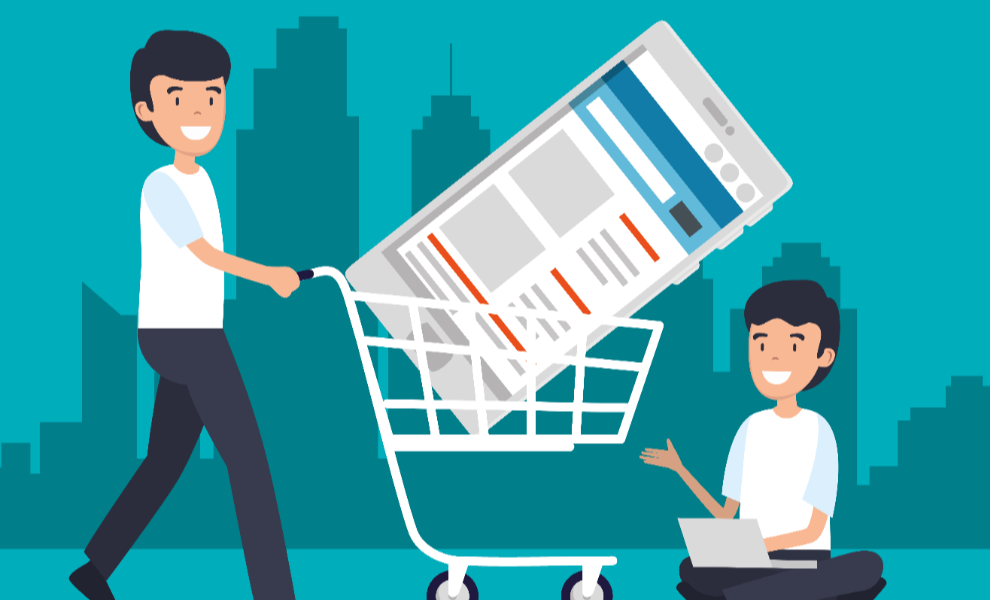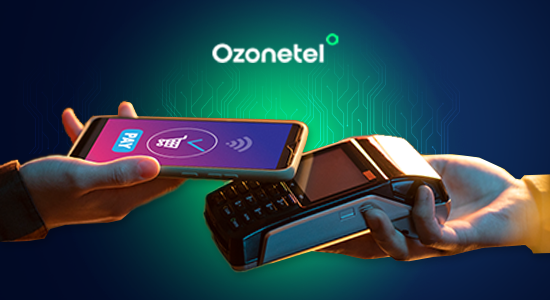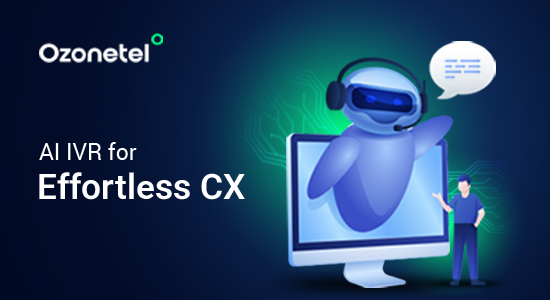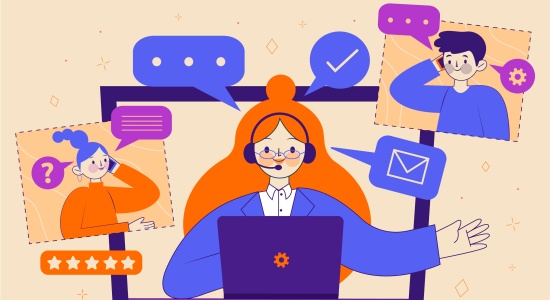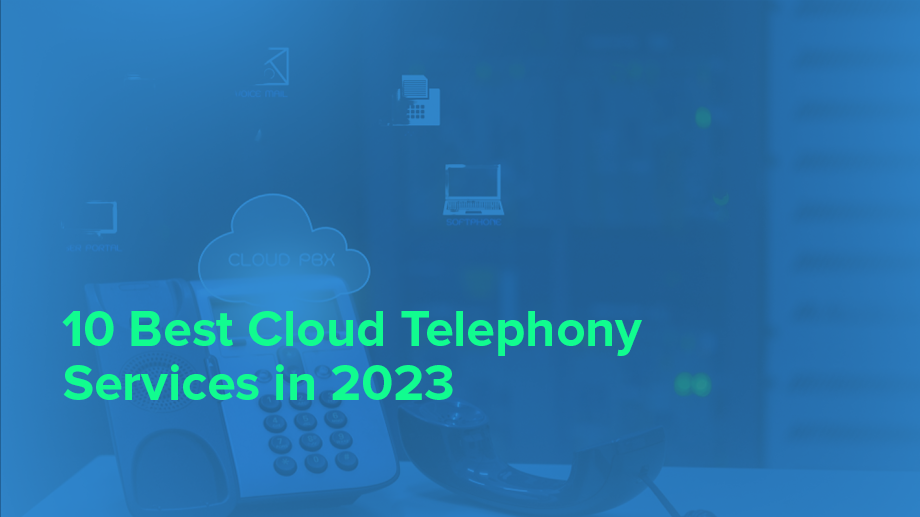- Resources
- What Is After-Sales Service and How Does It Impact CX
What Is After-Sales Service and How Does It Impact CX

Winning a customer is one thing—keeping them is another. Too often, businesses focus all their energy on making a sale, only to disappear once the deal is done. But customers don’t just judge a brand by what they buy; they remember how they’re treated afterward.
What happens when they have a question, need assistance, or run into an issue? If they’re left without support, frustration sets in, and loyalty quickly fades. That’s where after-sales service comes in. From troubleshooting and product training to warranties and follow-ups, this ongoing support plays a crucial role in customer experience (CX) and long-term retention.
In this article, we’ll break down what after-sales service is, why it matters, and how you can build a strong post-purchase support system that keeps customers coming back.
What Is Customer Obsession?
Customer obsession is about placing your customers at the core of every decision you make. It goes beyond simply satisfying their needs—it’s about actively working to improve their experience at every touchpoint, anticipating what they want, and addressing their concerns before they even raise them.
What Is After-Sales Service?
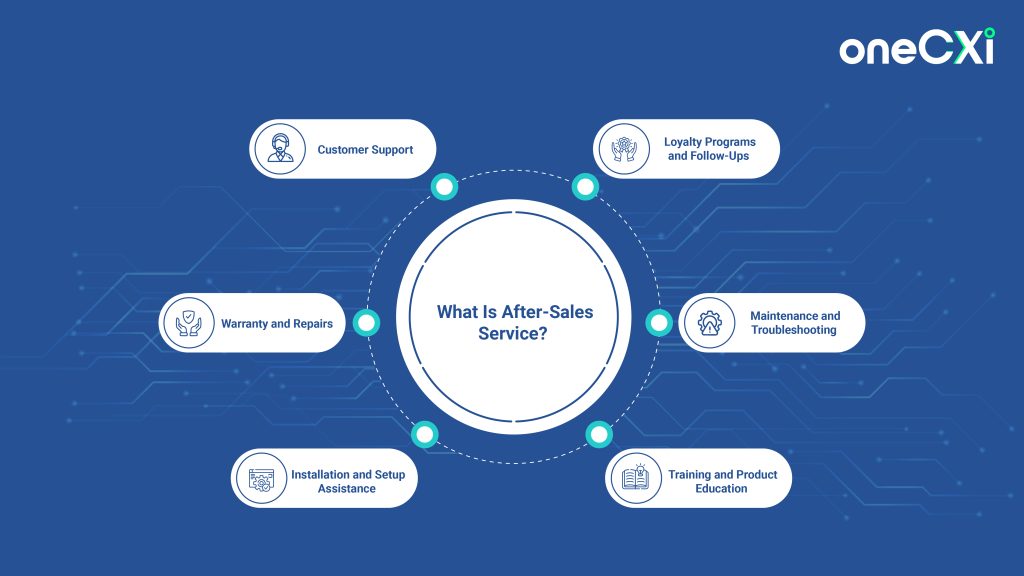
After-sales service is the support you receive after purchasing a product or service. It helps you resolve issues, understand how to use the product effectively, and maintain its performance. Businesses offer after-sales service to build trust, improve customer satisfaction, and encourage repeat purchases.
Some common types of after-sales service are:
- Customer Support: You can reach out to the company for help with product-related questions or issues. This may include phone support, live chat, email assistance, or in-person service centers.
- Warranty and Repairs: Many products come with warranties that cover repairs or replacements if they have defects. Understanding warranty terms ensures you know your rights if something goes wrong.
- Installation and Setup Assistance: Some products require proper installation to function correctly. Businesses may offer professional installation services or step-by-step guides to help you set up your purchase.
- Training and Product Education: For complex products, such as software or machinery, businesses provide training sessions, user manuals, or online tutorials to help you use them effectively.
- Maintenance and Troubleshooting: Regular maintenance services keep your product in good condition while troubleshooting support helps fix any issues that arise during usage.
- Loyalty Programs and Follow-Ups: Some companies offer loyalty rewards, discounts, or periodic check-ins to maintain long-term relationships with customers.
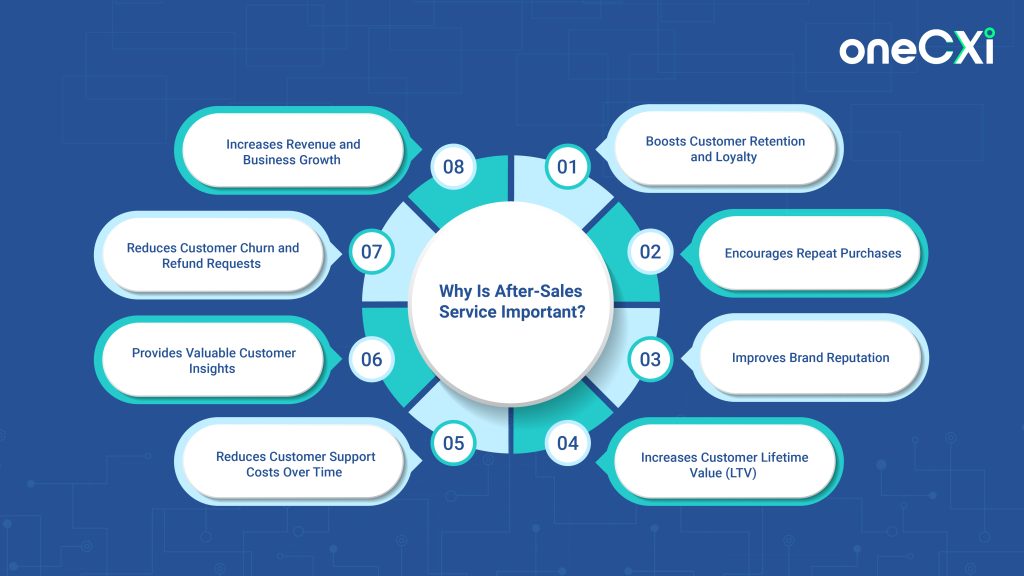
After-sales service directly impacts customer satisfaction, retention, and overall business success. When you invest in post-purchase support, you not only keep customers engaged but also increase their lifetime value (LTV), leading to higher revenue. Here’s why after-sales service matters:
Boosts Customer Retention and Loyalty
Keeping an existing customer is far more profitable than acquiring a new one. Studies show that increasing customer retention by just 5% can increase profits by 25% to 95%. Customers who receive strong post-sales support are more likely to continue buying from you, reducing churn (the rate at which customers stop doing business with you).
Encourages Repeat Purchases
Customers who have a good experience with after-sales service are more likely to return for future purchases. According to Marketing Metrics, the probability of selling to an existing customer is 60-70%, while the probability of selling to a new prospect is only 5-20%. Offering timely support, quick resolutions, and personalized assistance strengthens their trust, leading to repeat business.
Improves Brand Reputation
Around 95% of customers read reviews before making a purchase. Poor after-sales service leads to negative reviews, while strong post-purchase support encourages customers to leave positive feedback. A brand known for excellent customer support attracts more buyers and builds long-term credibility.
Increases Customer Lifetime Value (LTV)
Customer lifetime value measures the total revenue a business can expect from a single customer over time. The better the after-sales service, the longer customers stay with you. Happy customers tend to buy more frequently and even opt for premium offerings, increasing their overall value to your business.
Reduces Customer Support Costs Over Time
When you proactively address customer concerns and provide resources like FAQs, self-help guides, and easy warranty claims, you reduce the number of support requests. This leads to fewer escalations and lower costs associated with handling complaints.
Provides Valuable Customer Insights
Interacting with customers post-sale helps you gather feedback on your product’s performance. Tracking customer complaints, return reasons and common queries can help you improve future product offerings and refine your service strategies. Using tools like customer satisfaction (CSAT) scores and Net Promoter Scores (NPS) gives you a clear picture of where you need to improve.
Reduces Customer Churn and Refund Requests
Nearly 75% of customers consider switching brands after just one bad service experience. Proactive after-sales support prevents issues from escalating, reducing refund requests and customer churn. Offering clear communication, quick issue resolution, and personalized service keeps customers engaged with your brand.
Increases Revenue and Business Growth
Existing customers spend more than new customers, and they’re also more likely to try additional products or services. Providing excellent after-sales service encourages upselling (getting customers to purchase a more expensive version of a product) and cross-selling (offering related products). Strong customer relationships drive long-term revenue growth.
Examples of After-Sales Service
Now that you’re well aware of the various benefits of after-sales service, let’s look at some brands that have successfully built strong after-sales service strategies and what you can learn from them.
IKEA: Simplifying Product Assembly with How-To Videos

IKEA recognized a common frustration among customers—assembling furniture using complex written instructions. To address this, the brand launched a YouTube playlist featuring step-by-step video guides. These videos complement the written manuals and cover a range of topics, from installation to organization and decoration.
What You Can Learn
- Create detailed instructional content (videos, guides, FAQs) to assist customers post-purchase.
- Use multiple formats—written, visual, and video—to cater to different learning preferences.
- Address common pain points proactively to improve the overall customer experience.
Apple: Extended Warranty and Hassle-Free Repairs

Apple sets a high standard for after-sales service with AppleCare, which provides coverage for manufacturing defects for up to a year. Customers also get 90 days of complementary technical support and the option to extend their warranty. The service includes in-person and mail-in repairs, software troubleshooting, and even warranty transfer in case of resale.
What You Can Learn
- Offer extended warranties or service plans to build trust.
- Provide multiple support channels (in-store, online, phone) for convenience.
- Make technical support accessible for both software and hardware issues.
General Motors: Rewarding Customers with a Loyalty Program

General Motors strengthens customer relationships through My GM Rewards, a tiered loyalty program that offers points for purchases, services, and accessories. Customers can redeem points for vehicle maintenance, new parts, or exclusive experiences. The more they engage with the brand, the more they earn, encouraging long-term loyalty.
What You Can Learn
- Introduce a customer loyalty program that rewards repeat purchases and engagement.
- Offer tier-based rewards to incentivize higher spending and retention.
- Give customers a choice in how they redeem their rewards, making it more appealing.
Amazon: Hassle-Free Returns and Fast Resolution

Amazon has built a reputation for customer-first policies, especially in after-sales service. Prime members benefit from fast shipping and easy returns. If an item arrives damaged or is not as expected, Amazon often offers an instant refund or a replacement—without the hassle of contacting customer support. The return process is streamlined through the app, making it quick and convenient.
What You Can Learn
- Make returns and refunds simple to increase customer trust.
- Automate self-service options so customers can resolve issues without delays.
- Prioritize fast resolutions to prevent negative experiences.
Warby Parker: Home Try-On and Virtual Assistance
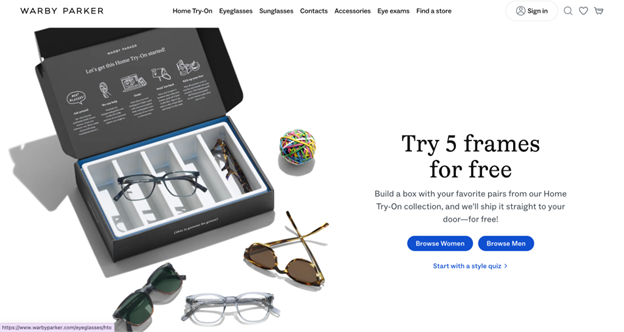
Warby Parker transformed eyewear shopping with its Home Try-On program, allowing customers to test up to five frames before committing. Customers can return and swap options until they find the right fit. Additionally, the brand offers a virtual try-on feature through its mobile app, reducing the hassle of in-store visits.
What You Can Learn
- Provide flexible trial options to help customers make confident purchase decisions.
- Use technology like virtual try-ons to improve the post-purchase experience.
- Simplify the exchange process to reduce customer effort.
Tesla: Mobile Service for Repairs and Maintenance

Tesla takes after-sales service a step further by offering mobile servicing, where technicians travel to customers’ locations to fix minor issues. This eliminates the need for customers to visit a service center, saving them time and effort. Tesla’s approach reinforces its commitment to customer convenience and long-term support.
What You Can Learn
- Offer on-site services for repairs or maintenance when feasible.
- Reduce the need for customers to visit service centers, making support more convenient.
- Use proactive servicing to detect and resolve potential issues before they escalate.
After Sales-Tips to Engage & Delight Customers
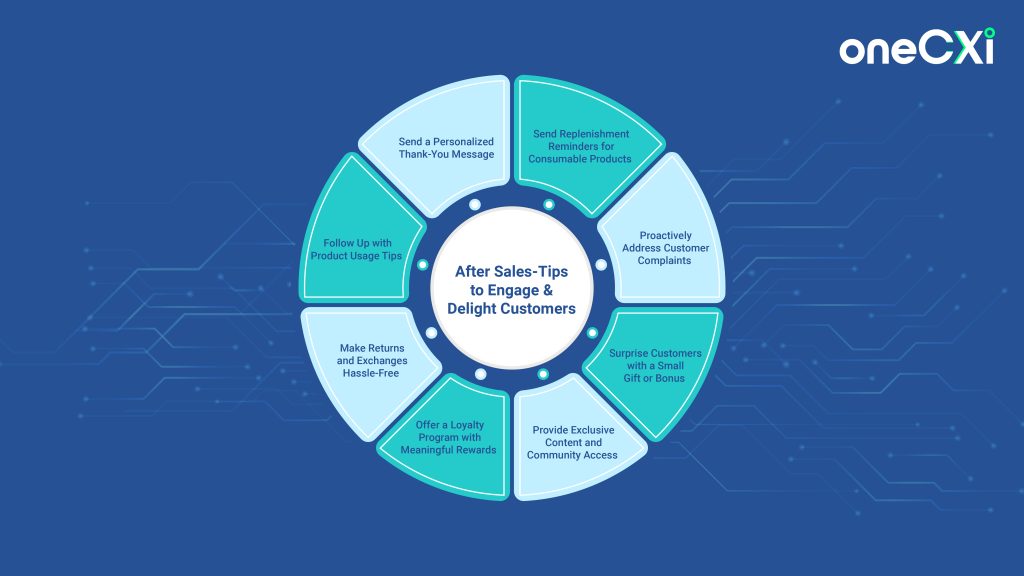
Providing a good product is just the beginning. The way you engage with customers after their purchase plays a key role in building loyalty and repeat business. So, here are eight actionable ways to keep customers engaged and satisfied.
Also, for consistency, we’ll use a skincare brand as an example throughout these tips.
#1. Send a Personalized Thank-You Message
A simple thank-you message makes customers feel valued. Instead of sending a generic email, personalize it with the customer’s name and purchase details. Adding a useful tip or a small incentive encourages engagement and repeat purchases.
For example, if a customer buys a hydrating night cream, you can send an email saying:
“Hi [Customer Name], thank you for choosing GlowNaturals! For best results, apply the night cream on slightly damp skin to lock in moisture. As a token of appreciation, here’s 10% off your next order—just use code THANKYOU10 at checkout. We’d love to hear about your experience!”
#2. Follow Up with Product Usage Tips
Customers may not always know how to use a product effectively. Sending a follow-up with usage tips, best practices, and potential mistakes to avoid can improve their experience and prevent dissatisfaction.
For example, a week after purchasing a Vitamin C serum, send an email titled “5 Ways to Get the Most Out of Your Vitamin C Serum.” The email can include key tips, such as using sunscreen during the day to prevent oxidation and applying the serum before moisturizer for better absorption. You can also include a short video tutorial for added engagement.
#3: Offer a Loyalty Program with Meaningful Rewards
Loyalty programs encourage repeat purchases, but customers engage only if they see real value. Instead of just collecting points, offer exclusive perks like birthday rewards, VIP discounts, and early product access. This encourages further engagement and a reason to return to your store.
For example, you can introduce a rewards program where customers earn points for every purchase, product review, and social media share. A second-time buyer receives an email:
“You’ve earned 200 points! You’re just 100 points away from a free mini-cleanser. Redeem now or keep saving for bigger rewards!”
#4: Make Returns and Exchanges Hassle-Free
A complicated return process frustrates customers and discourages future purchases. Making returns and exchanges easy builds trust and increases the likelihood of them trying another product.
Let’s say a customer has a reaction after using one of your moisturizers and requests a return. Instead of making them go through a long process, offer an easy exchange for a sensitive-skin alternative.
Also, ask a customer service rep to follow up with a personalized email asking for feedback and suggesting a patch test before using new products. This approach not only resolves the issue but also reassures the customer that their satisfaction matters.
#5: Provide Exclusive Content and Community Access
Giving customers valuable content beyond the purchase makes them feel connected to your brand. A private community, skincare guides, and expert Q&A sessions can help them stay engaged in the long term.
For example, after purchasing an exfoliating mask, send customers an invite to a private Insiders group. The group offers:
- Weekly skincare tips from dermatologists
- Live Q&A sessions with skincare experts
- Exclusive first access to new product launches
Customers who join feel like they are part of an insider community rather than just a one-time buyer.
#6: Surprise Customers with a Small Gift or Bonus
Unexpected gifts leave a lasting impression. A free sample, handwritten note, or exclusive discount makes customers feel appreciated and more likely to shop again.
So, when customers receive their order, they find a free sample of the best-selling sunscreen with a note:
“A little extra glow on us! Let us know what you think.”
This small surprise increases the chances of them trying (and later purchasing) the sunscreen.
#7: Proactively Address Customer Complaints
Ignoring or delaying responses to complaints can lead to negative reviews and lost customers. Responding quickly, professionally, and with a solution shows that you care.
Let’s say a customer posted a negative review of your brand on their social media. Instead of ignoring it, ask one of your customer service reps to reply within hours, apologize, and offer a consultation to find a better product match.
You can also provide a replacement for a gentler serum at no extra cost. The result? The customer might end up updating their post, appreciating your brand’s quick response and excellent service.
#8: Send Replenishment Reminders for Consumable Products
If your product needs to be replenished regularly, remind customers before they run out. This not only makes reordering convenient but also increases repeat sales.
Suppose a customer buys a 30-day supply of GlowNaturals daily moisturizer. On Day 25, send them an email, saying:
“Running low on your moisturizer? Order now and get 15% off before it runs out. Click below for a one-click reorder!”
Moreover, adding an easy reorder button reduces friction, making repurchasing effortless.
5 Tools to Deliver Exception Post Sales Service
While these tips can help you retain customers and build brand loyalty, the right tools can further streamline communication, gather feedback, and enhance support efficiency. So, let’s look at five after-sales service tools that you can invest in:
1. Ozonetel
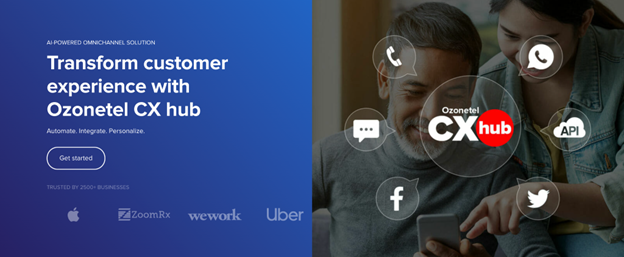
Ozonetel is an AI-engineered customer experience intelligence platform that automates interactions across multiple channels, including voice, chat, and email. It helps businesses route customer queries efficiently and provides agents with complete context to deliver personalized after-sales support.
Key Features:
- Omnichannel Communication: Manage customer queries across voice, chat, and email from a unified platform.
- Intelligent Call Routing: Prioritizes calls based on urgency, past interactions, or VIP status, ensuring faster resolution.
- CRM Integration: Provides agents with customer history, eliminating the need for customers to repeat information.
- AI Chatbots & Automation: Automates first-level interactions, improving response times.
- Real-Time Agent Monitoring: Helps managers track agent productivity and resolve inefficiencies quickly.
For example, Big Basket, one of India’s leading online grocery platforms, leveraged Ozonetel to optimize its call center operations. Their goal was to answer every customer call within 10 seconds while prioritizing loyal customers for even faster service.
With intelligent call routing, CRM integration, and a customized agent monitoring dashboard, they reduced Average Handle Time from 5 minutes to 3.5 minutes, ensured that 95% of calls were answered in under 10 seconds, and achieved 70% agent productivity.
Read the entire case study here!
2. SurveyMonkey
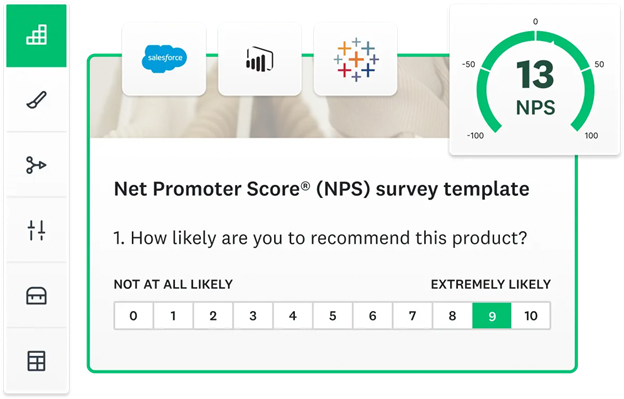
SurveyMonkey allows businesses to collect structured feedback from customers through customizable surveys. It helps measure customer satisfaction and identify areas for improvement using Net Promoter Score (NPS) and Customer Satisfaction Score (CSAT) metrics.
Key Features:
- Customizable Surveys: Create tailored feedback forms with branding options.
- Survey Logic & Branching: Personalize survey questions based on previous answers.
- Real-Time Analytics: Get instant insights into customer satisfaction trends.
- Integration with CRMs & Support Tools: Syncs responses with customer records.
3. Sprout Social
Sprout Social helps brands track and analyze customer sentiment across social media platforms. It provides real-time alerts for brand mentions, enabling businesses to respond to customer feedback promptly.
Key Features:
- Brand Monitoring: Tracks customer conversations about your brand on social media.
- Sentiment Analysis: Analyzes customer sentiment to identify positive or negative feedback.
- Competitor Tracking: Compares brand perception against competitors.
- Automated Alerts: Notifies teams about potential brand crises.
4. Hiver

Hiver enables businesses to create a centralized self-service portal with FAQs, tutorials, and how-to guides. This reduces dependency on support agents by allowing customers to find answers on their own.
Key Features:
- Easy Content Management: Create, edit, and organize help articles seamlessly.
- Multi-Format Support: Includes text, videos, and images for better engagement.
- Categorization & Search Functionality: Enables customers to find relevant information quickly.
- Integration with Email & Live Chat: Allows agents to reference help articles when responding to queries.
5. Zendesk
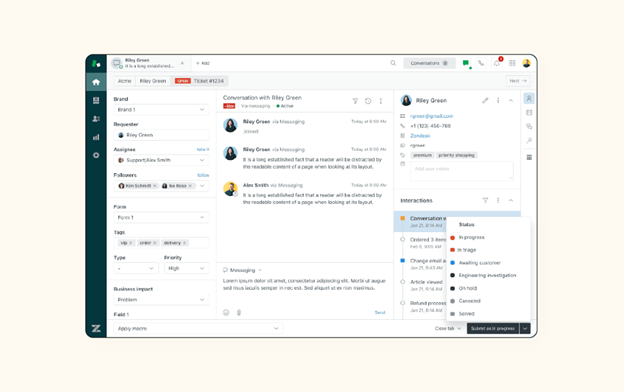
Zendesk centralizes customer queries from multiple channels into a structured ticketing system, allowing support teams to assign, track, and resolve issues efficiently.
Key Features:
- Multi-Channel Support: Collects queries from email, chat, phone, and social media.
- Automated Ticket Routing: Assigns tickets to the right agents based on priority and expertise.
- AI-Powered Responses: Suggests answers using historical data and machine learning.
- Performance Tracking: Generates reports on response time and resolution efficiency.
Conclusion: How After-Sales Service Shapes Customer Experience
A strong after-sales strategy ensures that customers don’t just make a purchase but also stay engaged with your brand. Prompt issue resolution, personalized support, and AI-powered automation can transform customer interactions into long-term relationships.
With Ozonetel CX Platform, you get a unified communication platform designed to improve customer interactions across voice, chat, and email. Our AI-driven automation, intelligent call routing, and real-time analytics empower businesses to reduce response times and optimize agent productivity.
Enhance your after-sales service with smarter customer engagement. Try Ozonetel free for 7 days!
Frequently Asked Questions
The 10 types of customers include:
- Potential Customers
- New Customers
- Confused Buyers
- Loyal Customers
- Angry Customers
- Lapsed Customers
- Need-based Customers
- Referring Customers
- Discount-Seeking Customers
- Curious Customers
The four primary types of customers are:
- New Customers – those trying your product or service for the first time.
- Returning Customers – familiar with your brand and come back for more.
- Loyal Customers – repeat buyers who trust your brand.
- Discount Customers – attracted mainly by deals or offers.
A customer is an individual or entity that purchases goods or services from a business. Customers are essential to a business’s success, as their needs and satisfaction drive growth and sales.


